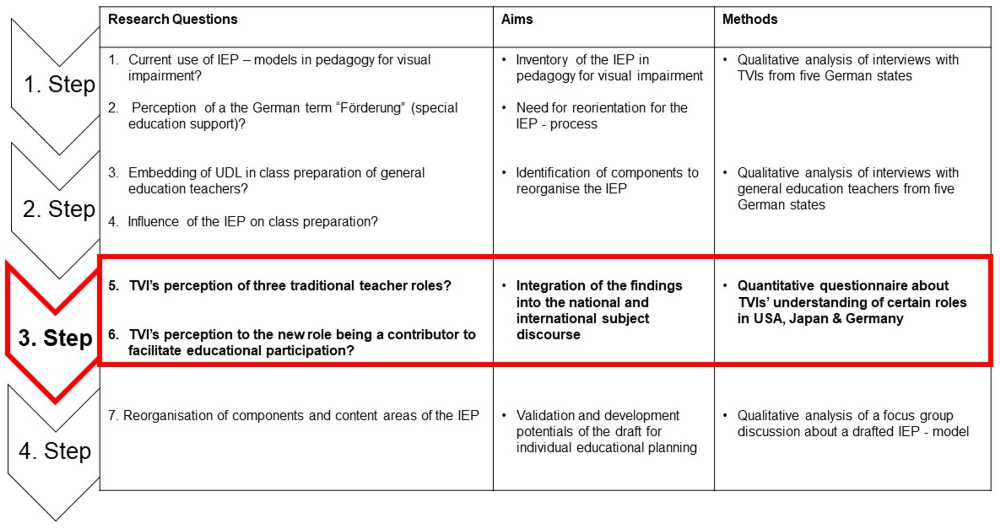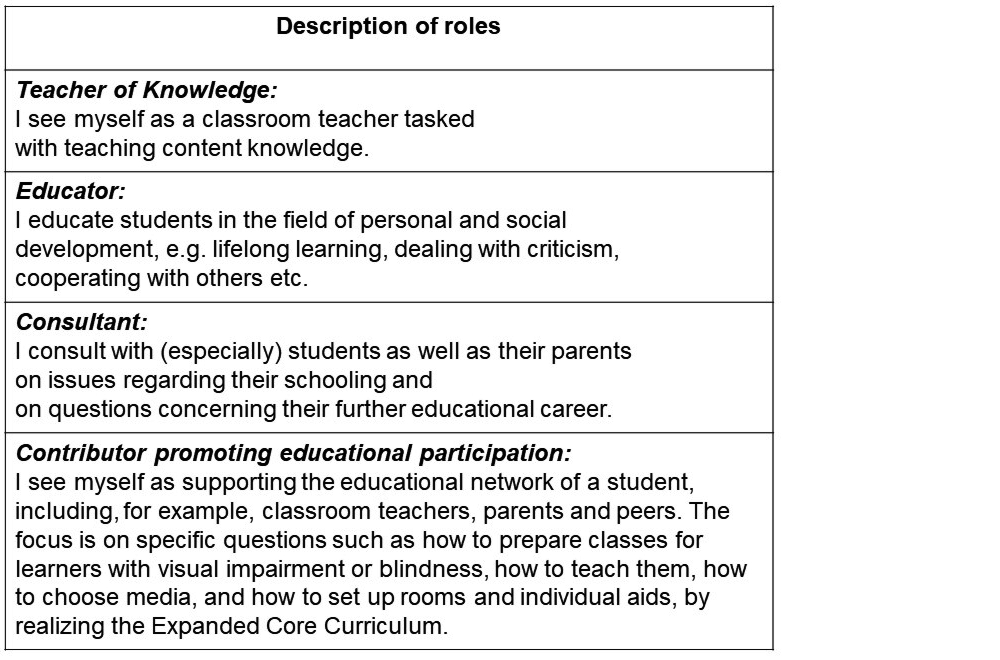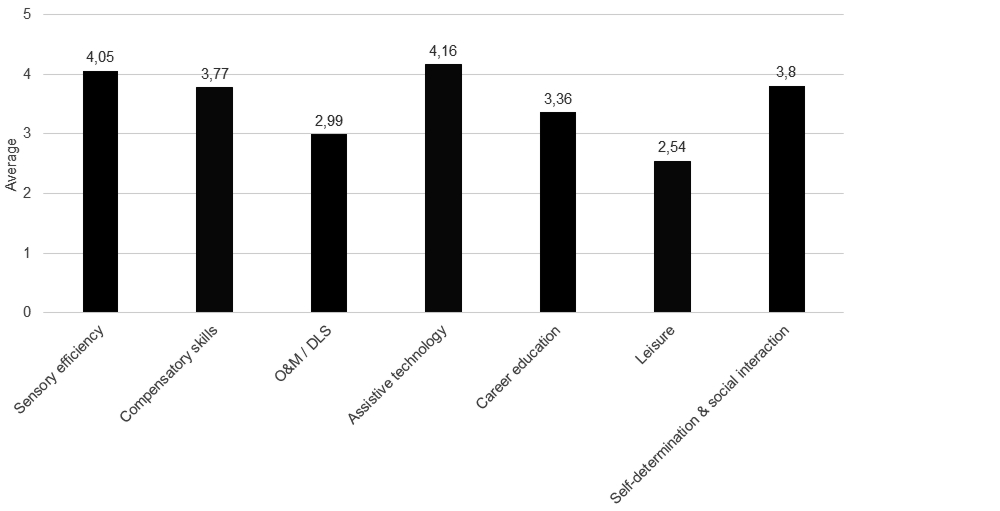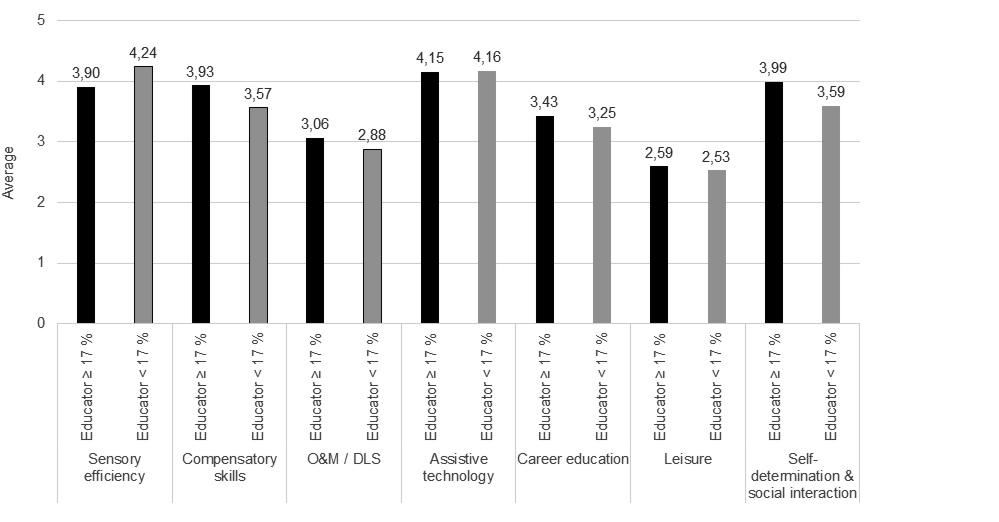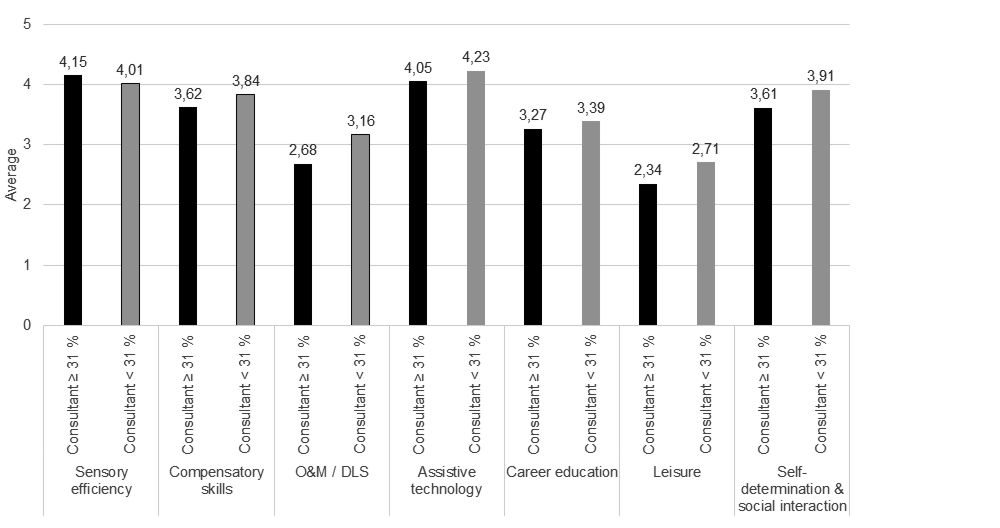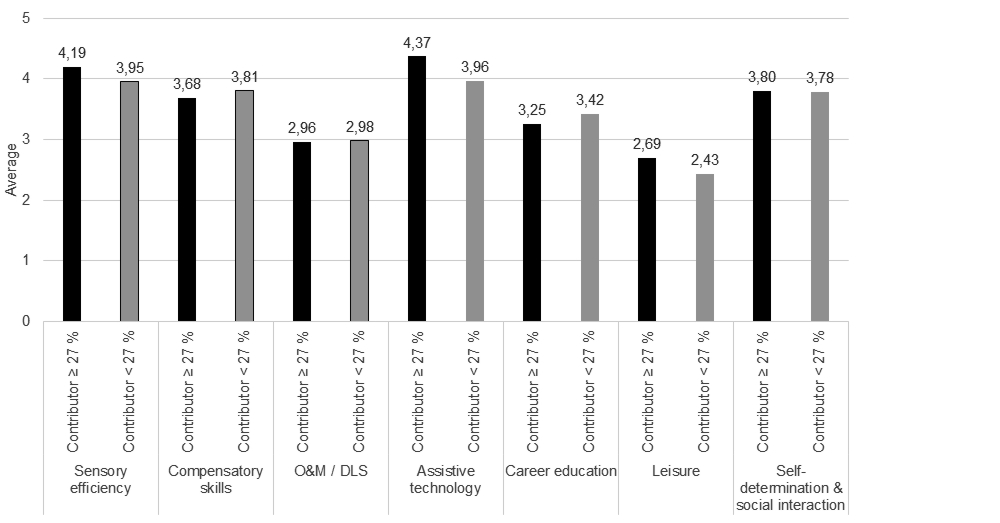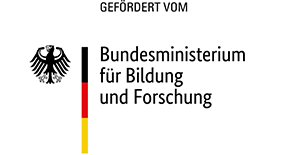Role perceptions among teachers of students with visual impairments in inclusive settings: implications for teacher training
Rollenverständnis von Blinden- und Sehbehindertenpädagog:innen in inklusiven Settings – Implikationen für eine veränderte Lehrer:innenbildung
DOI:
https://doi.org/10.21248/qfi.54Schlagworte/Keywords
TVI and role perception, Inclusive Education, Expanded Core Curriculum, Teacher Training, Lehrer:innenrolle von Blinden- und Sehbehindertenpädagog:innen, Inklusive Bildung, Spezifisches Curriculum, Lehrer:innenbildungZusammenfassung
Die Rollen sonderpädagogischer Lehrkräfte verändern sich im Zuge inklusiver Schulentwicklung. In einer subsidiären Sonderpädagogik gewinnen fachspezifische Beratung und Unterstützung unterschiedlicher Adressatengruppen an Bedeutung. Die klassische Lehrtätigkeit tritt für die Berufsgruppe in den Hintergrund, was die aktuelle Lehrer:innenbildung noch nicht widerspiegelt.
Die vorliegende Studie untersuchte das Rollenverständnis von Blinden- und Sehbehindertenpädagog:innen, die im inklusiven Bildungssetting arbeiten.
Da Inklusion eine internationale Zielkategorie darstellt, wurde diese Untersuchung in drei Ländern mit ähnlichen wirtschaftlichen Voraussetzungen aber unterschiedlichen historischen und kulturellen Verankerungen der inklusiven Schulentwicklung durchgeführt. Daten aus den USA, Japan und Deutschland weisen jedoch einheitlich darauf hin, dass die Aufgabenprofile von Blinden- und Sehbehindertenpädagog:innen in der Inklusion deutlich von der klassischen Lehrer:innenrolle abweichen. Es wird klar, dass sich insbesondere die Ausbildung von Blinden- und Sehbehindertenpädagog:innen intensiver auf die Anforderungen von Beratungs- und Unterstützungstätigkeiten in inklusiven Bildungssettings ausrichten muss.
Abstract
Obligatory inclusive education is leading to changes in the roles of special education teachers. Specialised counselling and support for different target groups have gained in significance in subsidiary special education. Classic teaching is becoming less important for special education teachers – a phenomenon that current teacher qualification programmes do not yet reflect.
This study examined the perception of the role of teachers of students with visual impairments (TVI) who work in inclusive education.
Since inclusion is an international target, this study was conducted in three countries with similar economic standards but different historical and cultural roots of inclusive school development. However, data from the USA, Japan and Germany all indicates that the task profiles of TVIs working in inclusive education differ significantly from the classic teacher role as a Teacher of knowledge. It is clear that particularly the education of TVIs must be adjusted further to the requirements of consulting and support tasks in inclusive settings.
Veröffentlicht
Ausgabe
Rubrik
Lizenz
Copyright (c) 2021 Wiebke Gewinn, Hisae Miyauchi, Sven Degenhardt

Dieses Werk steht unter der Lizenz Creative Commons Namensnennung - Keine Bearbeitungen 4.0 International.
